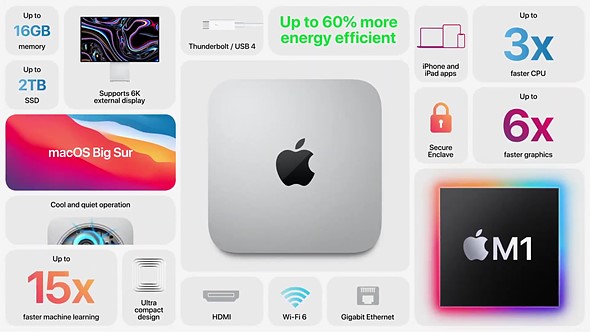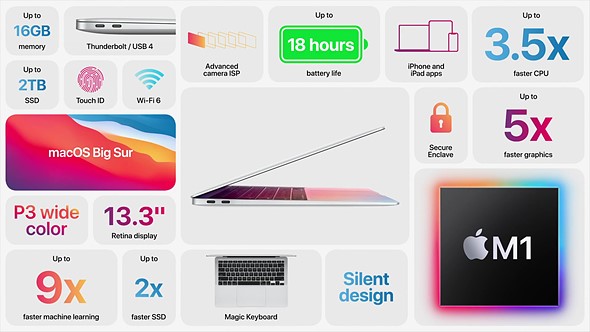The M1 CPU comes to the Mac.
The first Apple desktop computers used the MOS 65xx series of CPUs through November 1990, with the Apple IIC Plus. This was the Steve Wozniak designed series of machines which was replaced by the Macintosh in January 1984, though it took a while to die.
The Macintosh brought the innovative graphics interface to the screen and the Motorola 68000 series of CPUs saw to the heavy lifting. The last Macintosh, the Quadra 630 was sold in April 1996 by which time Motorola had proved unable to meet Apple’s growing CPU performance demands.
By the time the iMac was introduced in May 1998 Apple had dropped Motorola and retained IBM, using its broadly available series of G3 CPUs. These were very capable machines and the CPU also found itself into the G3 Powerbook laptop in November 1997 and constituted what was broadly recognized as the best laptop available. IBM enhanced performance in its CPUs in the G4, which also went into these machines, but the even faster G5 only made it into the laptop. That’s because it put out enough heat to make toast with your morning coffee and Steve Jobs realized that IBM’s day was done as CPU supplier to Apple. You can read about my sad experience with the G4/5 iMacs here, and the less said the better. Not only did the CPU overheat, the GPU was even worse – thank you Nvidia. Nvidia was dropped soon after in favor of ATI for graphics processing.
Jobs retained Intel, and the iMac of early 2006 used the Intel Core Duo CPU. This used less power, saw to it that you brought the toaster out of storage as the Intel CPU ran cool and, as a reult, Intel and Apple looked forward to a long and fruitful relationship. Meanwhile, toaster sales took off.
That relationship saw sunset this week with the introduction of the first M1 powered MacBook Air and the latest Mac Mini.

Mac Mini 2020 with the M1 CPU.
The M1 is a variant of the splendid Axx series of CPUs found in the iPhone. Anyone using an iPhone 11 with the A13 on board knows only too well how this CPU performs. Extremely low power consumption, heat output so low that no power hungry cooling fan is needed, and the whole thing sells for a starting price of $700. Add your disk drives, keyboard and display of choice and a mouse and you have a very capable desktop for relatively little money.
When Apple migrated from the IBM G series CPUs to Intel they also wrote one of the greatest utilities of the time, named Rosetta. This came with every Intel Mac and would permit the running of G3/4/5 apps with no input from the operator. It was invisible, and the performance penalty compared with later Intel apps was modest. Brilliant. I recall Steve saying that it took two years to develop Rosetta, and it was perfect.
Apple is doing something similar with the M1 powered Mini and Air and once again older apps promise to run seamlessly, though native versions can be expected soon and should outperform the Rosetta-translated ones.
In much the same way that Apple is moving away from the serial intellectual property thieves at Samsung for its cell phone components, the move to the in-house designed M1 will confer like independence and pricing power with the Intel bond broken. Most importantly, it gives Apple full control over software design, no longer beholden to someone else’s chip architecture. Here are the M1-powered MacBook Air performance specs:

MacBook Air 2020 with the M1 CPU.